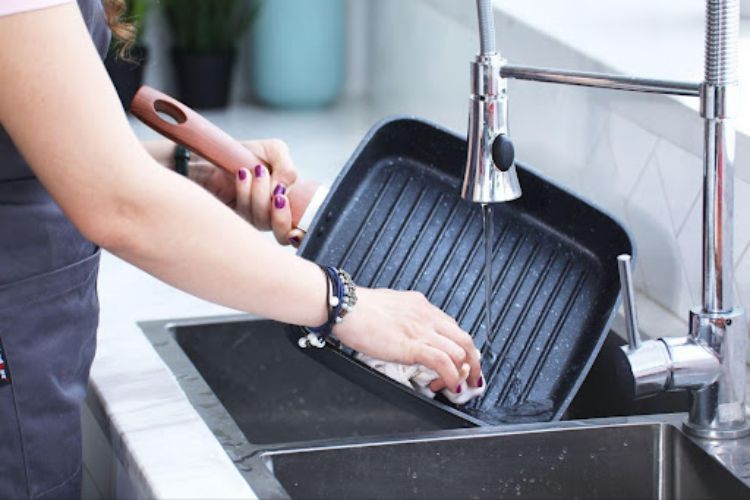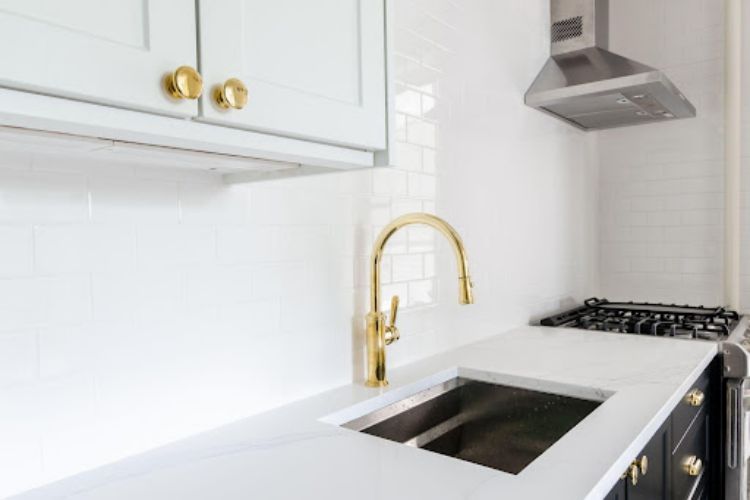 The kitchen’s worker, the garbage disposal, has become a need for us. The garbage disposal has stayed mostly stable in its design but has grown in popularity to the point where it is now necessary for kitchen equipment.
The kitchen’s worker, the garbage disposal, has become a need for us. The garbage disposal has stayed mostly stable in its design but has grown in popularity to the point where it is now necessary for kitchen equipment.
The guide that follows will provide you with all the knowledge you require to choose and operate a new disposal, utilize your disposal appropriately, troubleshoot issues, and perform straightforward repairs on your unit. Of course, if you aren’t mechanically inclined, hire a professional to correctly install or replace your disposal.
A Garbage Disposal’s Operation
The solid food waste is collected in a crushing chamber by the garbage disposal, which is fixed to the bottom of the sink. When you switch on the disposal, an impeller plate or spinning disc spins quickly, pushing the food scraps up against the grinding chamber’s outside wall.
As a result, the meal is reduced to microscopic fragments, which are subsequently cleansed by water passing through openings in the cavity wall. You should be very careful during the installation of a garbage disposal unit, as they’re heavy and should never be wired in life. Disposals, contrary to popular belief, do not feature sharp blades. Instead, they have two blunt metal “teeth” on the impeller plate.
Things Never to Be Placed in a Trash Disposal
Your garbage pail and your disposal are two different things. Not all liquids and food waste should be put down at your disposal.
It is critical to understand which foods should be disposed of in the wastebasket and what the disposal for waste is capable of handling to avoid blockages and jams. Generally speaking, you should not include food scraps that are too tough or fibrous, potato peels, grease, or oil, as well as pits and other hard items. Click here for more on the proper disposal of food waste.
Troubleshooting for Disposals
You can avoid needless replacement of the unit and service calls costing hundreds of dollars by doing a little diagnostics of typical garbage disposal issues. The majority of disposal issues are caused by blockages. Blocked disposal is simple to fix, but continuously restarting the appliance while ignoring the jam might damage the motor.
Clog a Disposal and Fix It
The most frequent cause of clogs is incorrect food utilization, such as fat, potato peels, or items that are difficult to grind. Although they can happen in the disposal itself, clogs typically develop in the drainpipe after the disposal. The best technique to avoid clogs is to dispose of problematic waste in the rubbish bin instead of the disposal. Additionally, keep things tidy.
How to Choose a Disposal
You may make the process of selecting a fresh disposal as simple or as complex as you wish. You can go to your neighborhood home store or appliance retailer and purchase a conventional model that will probably be perfect for your needs.
On the opposite hand, you may conduct some research on the most recent extra features that certain disposals are now offering, such as fancy metal like stainless grinding chambers or additional sound insulation, and then choose a specific model that has all the bells and whistles you need.
 Installing a disposal system
Installing a disposal system
Although reasonably simple, installing a disposal for waste calls for only the most fundamental knowledge of electrical and plumbing wiring. In a few hours, the majority of reasonably handy homeowners can put in a new disposal.
Removal and Re-installation of a Disposal
If you want to replace your sink or a broken garbage disposal, you must first remove the disposal. Many disposal models allow you to rapidly separate the motor unit (the bulky component) from the sink assembly, making the remainder of the dismantling and removal easier.
Since every circumstance is unique, it is important to pay special attention to the power sources, electricity, and other particulars of your sink and kitchen setup while you are looking into disposals. Your options for disposal and how easy or challenging installation and maintenance will be will depend on these factors.
 How durable are garbage disposals?
How durable are garbage disposals?
The normal lifespan of a garbage disposal is eight to twelve years. Use this appliance in accordance with the manufacturer’s instructions to get the most life out of it.
Are disposals maintenance-required equipment?
Take careful care of your garbage disposal to keep it functioning optimally. Use cold water, run it frequently, put small, not huge, pieces of food down the disposal, and disinfect it at least once every two weeks.
How can you remove the unpleasant smells from your disposal?
Lemons and other citrus-flavored fruits, like limes and oranges, work wonders to get rid of unpleasant disposal scents. Fruit that has been cut into wedges should be put in the garbage disposal and run.
An Installation Guide
It will attach to the bottom of the sink plus have an output that connects to the drain pipe whether you are replacing an existing disposal or putting it in for the first time. The disposal is connected through your dishwasher’s outlet hose.
In general, garbage disposals range in horsepower from 1/3 to 1hp. A septic-safe disposal must be purchased if you’re equipped with a septic system. For your requirements, check the manufacturer’s recommendations.
Change a Garbage Disposal: How to Do It
You will require a nearby outlet or switch if you do not already have a disposal. For installation, speak with a certified electrician and find out whether a permit is necessary.
Instructions
- First, separate the pipes, then take out the strainer.
- Take the drainpipe out.
- Shut off the kitchen’s electrical breaker (https://www.electricaltechnology.org/2021/07/mccb-molded-case-circuit-breaker.html), which should be labeled.
- After that, place a bucket underneath the P-trap and unplug the drain pipes.
- Remove the strainer from the sink as well as any extra putty.
- Apply the plumber’s putty in step two.
- Insert the Snap Ring in Step 3
- Connect with the dishwasher drain in step 4
- Uninstall and reconnect the wire shield plate in step 5
- Connect the drain in Step 6
- Examine the disposal
- By inserting the stopper inside the sink drain and running the sink with water, you can check your connections.
- Verify for leaks.
- The disposal should now be plugged in and the electricity turned on.




